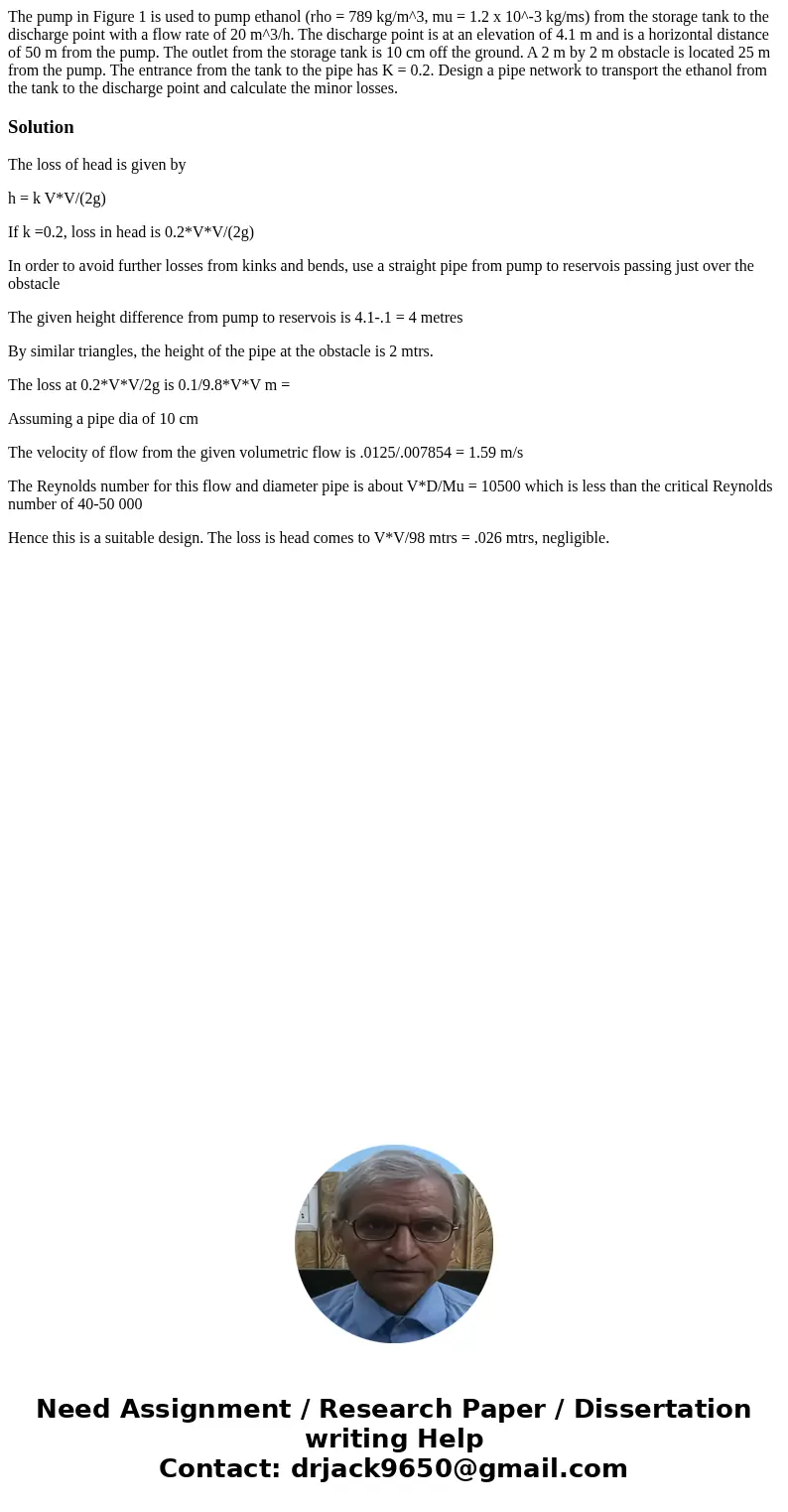The pump in Figure 1 is used to pump ethanol rho 789 kgm3 m
The pump in Figure 1 is used to pump ethanol (rho = 789 kg/m^3, mu = 1.2 x 10^-3 kg/ms) from the storage tank to the discharge point with a flow rate of 20 m^3/h. The discharge point is at an elevation of 4.1 m and is a horizontal distance of 50 m from the pump. The outlet from the storage tank is 10 cm off the ground. A 2 m by 2 m obstacle is located 25 m from the pump. The entrance from the tank to the pipe has K = 0.2. Design a pipe network to transport the ethanol from the tank to the discharge point and calculate the minor losses. 
Solution
The loss of head is given by
h = k V*V/(2g)
If k =0.2, loss in head is 0.2*V*V/(2g)
In order to avoid further losses from kinks and bends, use a straight pipe from pump to reservois passing just over the obstacle
The given height difference from pump to reservois is 4.1-.1 = 4 metres
By similar triangles, the height of the pipe at the obstacle is 2 mtrs.
The loss at 0.2*V*V/2g is 0.1/9.8*V*V m =
Assuming a pipe dia of 10 cm
The velocity of flow from the given volumetric flow is .0125/.007854 = 1.59 m/s
The Reynolds number for this flow and diameter pipe is about V*D/Mu = 10500 which is less than the critical Reynolds number of 40-50 000
Hence this is a suitable design. The loss is head comes to V*V/98 mtrs = .026 mtrs, negligible.

 Homework Sourse
Homework Sourse